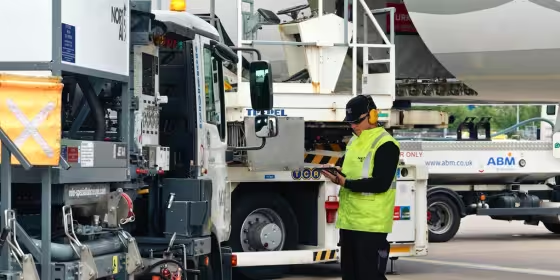
On average, in Europe, just a one-minute delay costs around €166. For both airlines and ground handling teams, every delay drives up crew hours, increases fuel burn, frustrates passengers, and strains already tight schedules. Yet one of the most critical steps in the turnaround process still relies on outdated systems: fuelling.
Across the sector, many ground-fuelling operations still rely on paper tickets, clipboard checks, and verbal dispatch. These legacy processes slow down reconciliation, increase the risk of errors, and leave teams unable to respond when plans change in real time. What once worked in a slower, less connected environment now creates costly inefficiencies. The result is a system that struggles to keep pace with modern airline operations, even as carriers invest heavily in their own digital transformation.

f fuel teams want to win, they need to close the information gap between pilots, operations teams, and fuelling providers. Real-time coordination is the difference between reacting to problems and preventing them. When everyone has access to the same live data, communication becomes seamless, decisions happen faster, and costly minutes on the ground disappear.
In one blind case study, a major European fuelling operation shifted from manual processes to a digital platform, improving data accuracy and real-time coordination across its network. The results speak for themselves:
With accurate, real-time data, flight crews could adjust orders mid-refuel, reducing waste and unnecessary burn. The efficiency gains also helped the airline meet sustainability targets without changing schedules or routes.
.avif)
For into-plane operators, real-time coordination cuts admin time, improves safety compliance, optimizes resource use, and strengthens their commercial position with airline partners by improving on-time performance and reducing fueling-related delays.
Digitisation also changes the relationship between airline and provider. When data is transparent and accurate, trust grows. Airlines gain confidence in service quality, and providers can demonstrate tangible performance improvements. Real-time visibility allows both sides to make better decisions together, strengthening long-term partnerships.
The next decade of ground handling will be defined by visibility. Airlines are connecting every part of their operations, from maintenance to baggage to catering, and fuelling is the next frontier. The goal is simple: give teams the clarity and data they need to make faster, better decisions on the ground.
The aviation industry has already proven what happens when data flows freely. Flights depart on time, emissions fall, and customers notice. For into-plane providers, this is a chance to redefine what it means to be a strategic partner. Those who act now will lead the transition towards more reliable, transparent, and sustainable operations.
Because in aviation, time is money, and data is time.